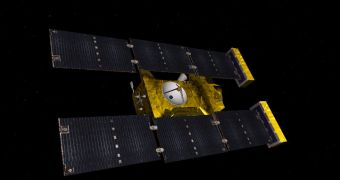In about 11 days, a NASA space probe is due to perform flyby of a comet within the inner solar system, for the third time since it was launched. The spacecraft carried out a correction maneuver a few days ago, in order to ensure that the meet-up will go on without a hitch.
The Stardust-NExT mission uses a space probe that has imaged other comets before, but which is so resilient that it accepts re-purposing and mission reassignment following each successful flyby.
Launched in 1999, the Stardust spacecraft was originally a sample-return mission bound for comet Wild 2. As it was heading towards its target, it also carried out a flyby of comet Annefrank.
After successfully returning its sample chamber to Earth, mission managers at the NASA Jet Propulsion Laboratory (JPL), in Pasadena, California, decided to try and gain even more data about comets using the specialized spacecraft.
The comet 9P/Tempel 1 was selected as a target because it was visited by the Deep Impact space probe in 2005. At the time, that spacecraft released an impactor that slammed into the space body.
However, the exact extent of the effects this test caused were not made clear, due to the massive plume of ice and dust particles that formed clouds around the impact site. JPL scientists hope that Stardust will be able to observe the Deep Impact site.
On January 31, JPL experts wanted to ensure that no problem would plague the upcoming flyby, and so they carried out an in-flight orbital correction maneuver. The engines aboard the space probe were fired for short durations, in order to adjust its heading.
The engine firings began at 4 pm EST (1:00 pm PST), and conclude after only 130 seconds. A total of 300 grams of fuel were consumed, the equivalent of 10.6 ounces. The spacecraft's velocity changed by about 5.8 miles per hour.
“An almost six-miles-per-hour change may seem insignificant when we're closing in on the comet at 24,236 miles per hour [39,000 kilometers per hour],” explains Stardust-NExT project manager Tim Larsonat, who is based at the JPL.
“But we're still two weeks and 8.37 million miles [13.5 million kilometers] away from the comet. At that distance, our burn will move our location at time of closest approach to the comet by almost 1,900 miles [3,058 kilometers],” he goes on to say.
“By observing the results of these planned maneuvers and making further rocket burns, that's how we get a spacecraft to be where we want it, when it's on the other side of the solar system,” the JPL official concludes.

 14 DAY TRIAL //
14 DAY TRIAL //